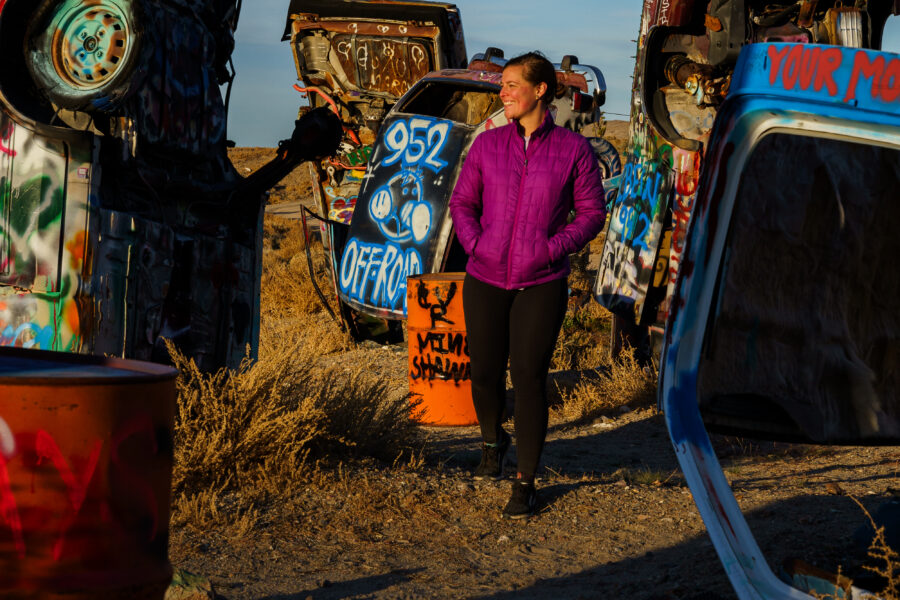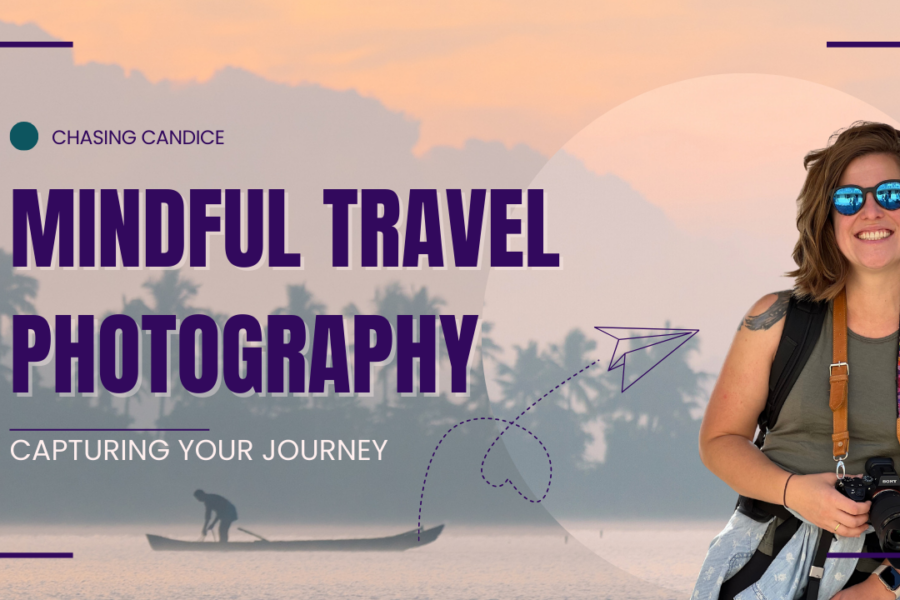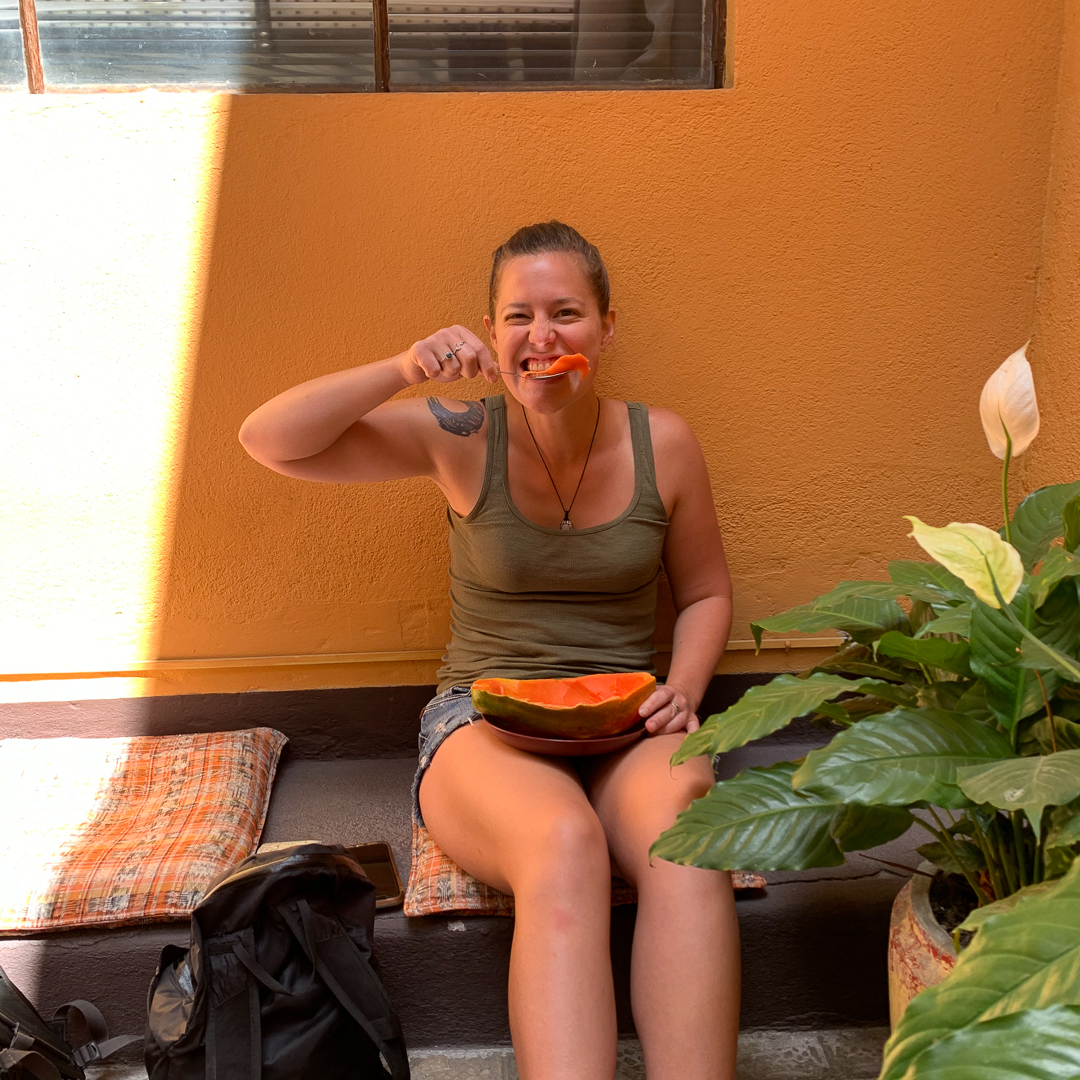
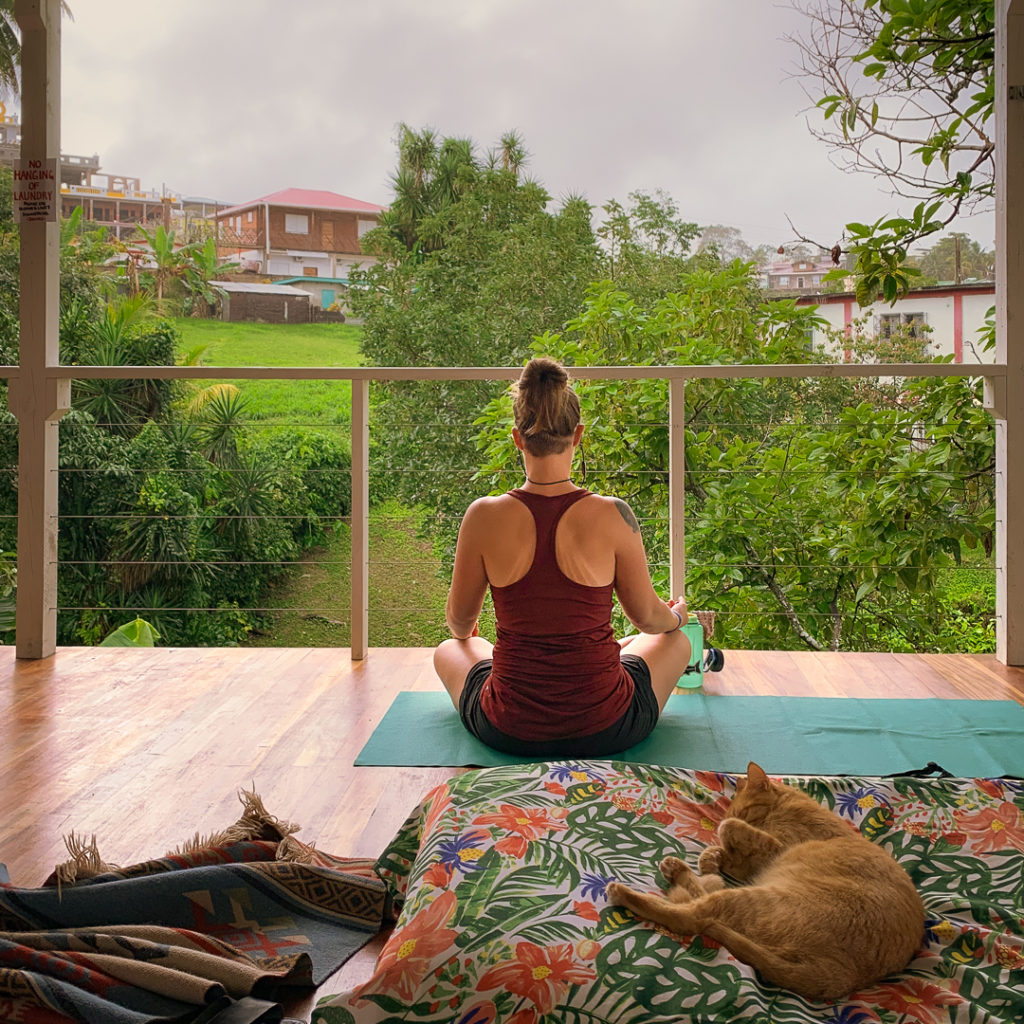
Disclaimer – discuss health changes with your doctor. They know you personally so they will be able to give you personalized advice, and risk mitigation techniques specific to you and discuss possible contraindications.
After working in the health and wellness industry for over a decade as a personal trainer, Olympic weightlifting coach, yoga instructor, etc. then becoming a tour guide and full-time traveler. I have a lot of big opinions on wellness on the road.
Over the years I have spent tons of time unlearning some of the negative troupes around what it is to be healthy. There are still times when I get down on myself for not looking more like a fitness model but genetically that will never happen for me. Like it would take a CRAZY amount of time and energy that I am not willing to give. My body can move and do all the things that I want, that is what is most important.
Here is my take on a holistic approach to wellness, creating personalized goals and sticking to them while traveling.
3 Essentials of Wellness
We can think of health & wellness as a Venn diagram of 3 interconnected pieces.
MIND – Engaging your brain and challenging yourself. Regular self-introspection to help you make conscious and purposeful decisions. Actions that help this – reading, journaling, meditation
BODY – Moving your body with activity or exercise, balanced with rest. Eating in a balanced and healthy way that nourishes and fuels your body. Actions that help this – creating a movement routine that you enjoy and meal planning
SOUL – Doing things that light you up and reset you. Actions that help this – prioritizing yourself by making time to do the things that you love
These 3 essentials are interconnected. For example, you have to be mindful to listen to your body to find what activities to do or if you need to take a rest. To move optimally you have to be fueling your body in a balanced and nourishing way. Feeding your soul with activities that light you up is essential otherwise everything will feel like “work” and motivation will plummet.
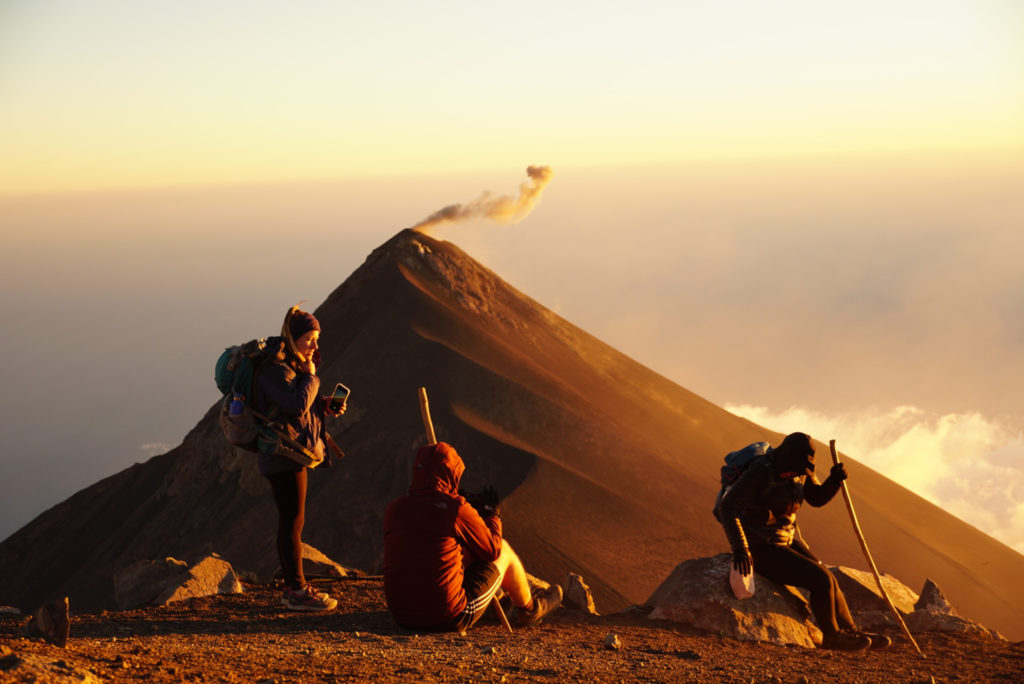
Assessing your Baseline
To get clear on your goals, start by analyzing your current routine. What does your typical day look like? What does your week look like? Are you feeling balanced, healthy, and well daily, weekly, or monthly? Using the pillars, what are your movement practices? Are you eating in a balanced and nourishing way? Are you checking in with yourself so you can move forward purposefully? Are you making time for the things that you enjoy, simply for the enjoyment?
Be flexible and honest with yourself here. It can be easy to fall into a spiral of not enough and comparison. If these feelings come up, journal about them and try to release those pressures. It can be helpful to find the root of these, for example, if you’re feeling a lot of negativity coming up about your body – is this rooted in yourself or societal pressure.
Are you feeling not enough because your body can’t yet do all that you want it to? Or are you feeling comparison/pressure to look like a fitness model? In these moments, list 3 things that you love that combat the negativity coming up.
I worked in the fitness industry for a decade and I still catch myself comparing my body to others. Becoming aware of this and redirecting my thoughts has been key! When those negative thoughts arise, I list 3 things I love about my body. My strong legs help me climb steep mountains. My muscular upper body helps me carry heavy backpacks while I travel. I’m able to dance and drop it low!
Setting your Goals
Set yourself up for success by creating S.M.A.R.T. goals. Create a comprehensive plan that anticipates obstacles. Give yourself grace when you don’t follow through perfectly. Keep your “why” at the forefront to help keep you motivated.
S – Specific, Simple, Sensible, Significant
What do you want to accomplish? Why are you trying to accomplish this goal? What is its importance? What re
M – Measurable, Meaningful, Motivating
How often? What are your markers to indicate achievement? How will you know when the goal is accomplished?
A – Achievable, Attainable
Is this goal realistic? Are there any constraints to take into account (finances, time, etc)? What are some obstacles that you anticipate? How can you accomplish this goal?
R – Relevant, Reasonable, Realistic, Resourced, Results-Based
What resources do you need? Is this goal relevant and helpful to you? Is it worthwhile?
T – Time-Bound, Time/Cost Limited, Time-Sensitive
When will you act on your goal? When do you want to accomplish this goal? How often? Is the timing right?
Getting clear on your goals and finding your why will help keep you going even when motivation/willpower is low. There will always be lulls so how can you show up for your goals in those moments? Setting up a plan of action that anticipates obstacles will help you stay consistent and prevent self-deprecating spirals.
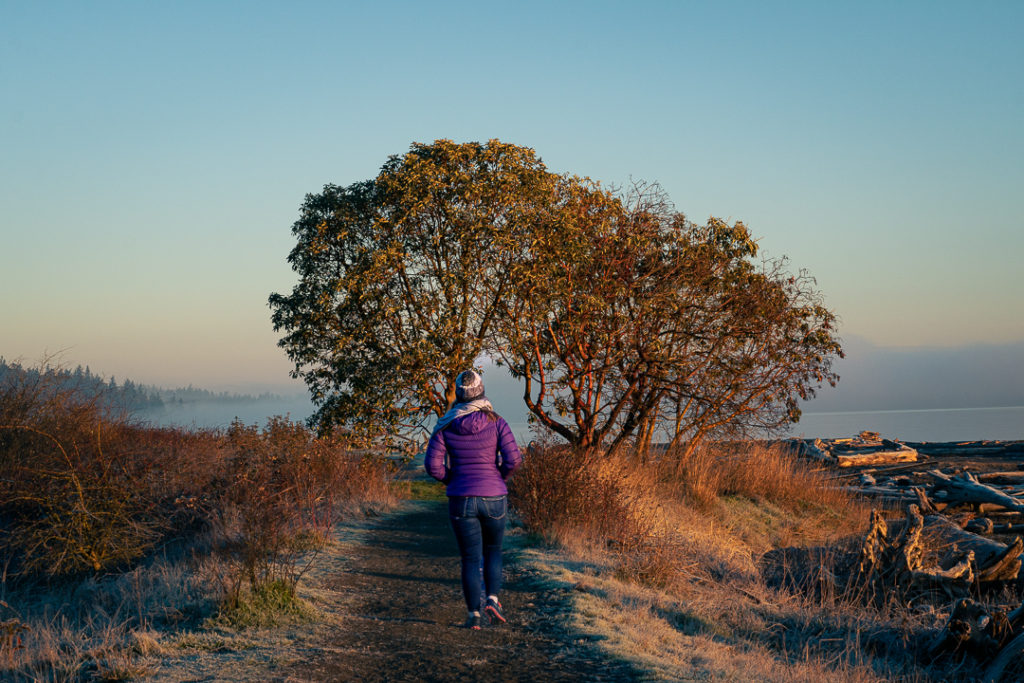
Mindset
Before the Trip
- get solid in your goals
- anticipate obstacles and how to overcome them
- research nutrition and movement options in advance (ie where are the vegan restaurants, is there a gym at the hotel or a park near the hostel, etc)
During the Trip
- check in with yourself regularly so you can make the best choices moving forward
- be flexible – just like travel, you may need to adjust your plan
- listen to your body – if you need rest or more veggies or whatever, do it
- be kind to yourself – you aren’t always going to be perfect, try not to beat yourself up about it
- try your best
Journalling or meditating regularly can help you check in with yourself regularly. Meditation apps such as Insight Timer, Headspace, or Calm are great options. My personal preference is Insight Timer, they have tons of options, styles, and topics. It is a super robust app.
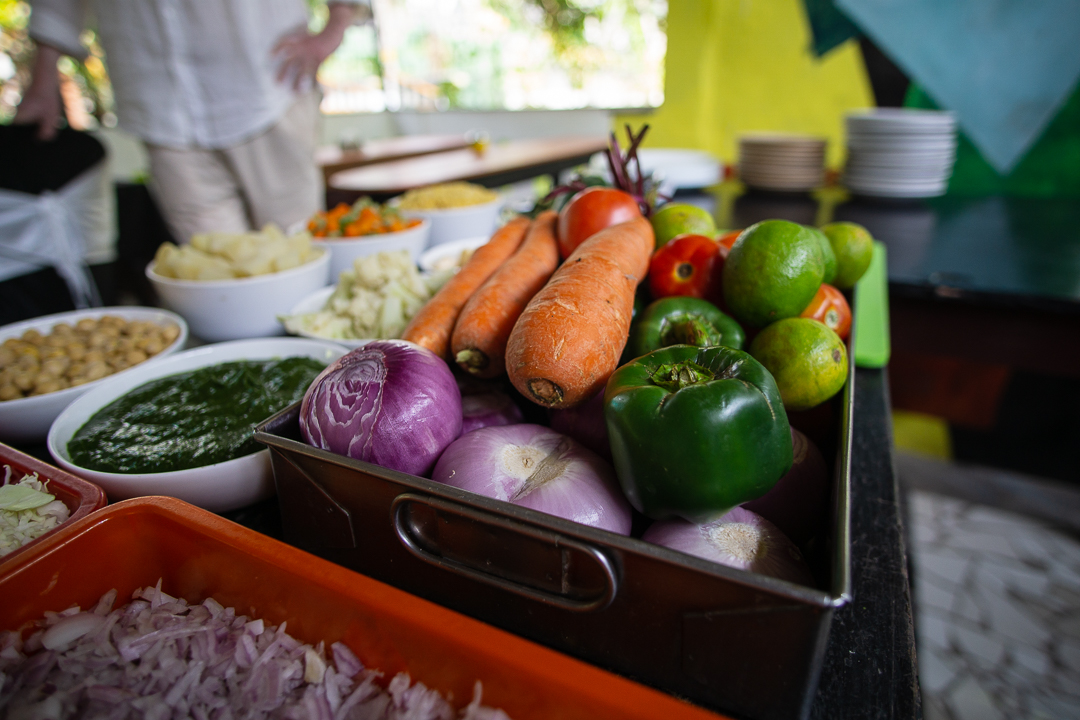

Nutrition
We gotta reframe our ideas about diets/nutrition. I love an opportunity to kick diet culture in the teeth. Instead of thinking of diet from a place of restriction, let’s focus on creating habits around food that nourishes the body and makes you feel your best.
Often, with diet and nutrition, there is that underlying idea that you should just willpower your way into eating healthy all the time. But that rarely works! First, it elicits a shame response when you fail which you inevitably will. We are imperfect beings. We aren’t meant to be perfect all the time! Plus diets fight against the bacteria in your gut (gut flora).
We all have tons of bacteria in our digestive system, as we eat a specific way it trains them to crave those foods, and the bacteria that feast on the foods you’re giving them will thrive. So if you regularly eat sugar or processed foods, that is what the bacteria will grow to crave. This is why so many people fail when they opt to go cold turkey and eat only healthy things. They’re fighting an entire army of gut flora that is accustomed to specific types of food.
Let’s focus on creating habits around food that nourishes the body and makes you feel your best.
To make long-lasting nutritional changes, you can try to start slow and steady. Think of it as nourishing your gut flora and training them to crave healthier things. As you nourish your body, the bacteria that crave sugar or whatever will have less sway over your cravings. This can be a slow process, be gentle and kind with yourself.
Becoming clear on your nutritional goals will help you stick to them. Regular self-reflection and appreciation of self will help you be successful. If you eat a great meal that you feel happy and nourished from – celebrate it! Do the happy food dance! Little celebrations give you a blast of feel-good hormones like dopamine, this will help you stick to your goals in the long run.
Before a trip, research the location to see what foods are available, what will work with your budget, and how they will work with your nutritional goals. Know that some diets are harder than others in specific countries. For example, I’m allergic to potatoes so Germany and Ireland can be difficult for me. If you are a vegan, South East Asia can be difficult for you. Try to be prepared and flexible. There are tons of apps and websites to help you find specific foods around the world. Happy cow is a great example of an app to find vegan restaurants.
During your trip, you will find your balance between trying the local foods and sticking to your goals. Some days will be better than others. Stay mindful, note what works and what doesn’t, and make adjustments. The key here is to notice how you’re feeling. If you are feeling energized then keep it up, if you are feeling sluggish then adjust. Food journaling may help you stick to your goals and notice what is making you feel energized or sluggish.
The most important thing is to find the system that works for you. Find your balance and be clear about your nutritional goals.



Movement
Consistency is key for any movement practice, if you want to better your skills or see results – get consistent. Of course, that is easier said than done. So how can we make this process easier to adhere to?
- Start with what you like to do. Do you like cardio, hiking, pilates, lifting? Find what it is that you enjoy and integrate into your life.
- Timing, if you are a night owl, early morning workouts are going to be incredibly difficult to stick to.
- Work with yourself here don’t try to fit yourself into a box because that worked for someone else.
- Where? If you like the gym then go there! If you would rather be outside, move outside.
Personalize your movement practices to fit what you enjoy and how you like to push yourself. Find your motivation and your “why”. This will help you keep consistent on days when your brain tries to talk you out of it. For me, I love that post-workout glow and feeling of accomplishment. When my brain tries to say not today, I remember how great I feel 10 minutes in and at the end.
Discernment is important here too. Sometimes your brain is trying to talk you out of it because you need a rest. If you start your workout and 10 minutes in you’re still not feeling it, that’s a great sign that it is time for a rest or active recovery day. Active recovery could be a mellow walk around the park or yoga. Some sort of activity that won’t be overly taxing on your body. As you get consistent in your movement practice and it becomes a habit, the ability to know when your body needs a rest day will get better.
As we can see, mindfully checking in with yourself is going to be key in creating a movement practice and sticking to it. As you’re creating your plan ask yourself:
- What resources do you need to be successful?
- What obstacles do you thiink you will have?
- How can you overcome them?
Key points – A personalized movement routine of activities that you enjoy is essential! Have a balanced variety of activities and rest. Anticipate obstacles. Listen to your body.
While you’re creating a plan to use when you’re traveling do some research in advance. Does your hotel have a gym? Does your hostel have a place to work out? Are there outdoor gyms or parks nearby? Are planning high activity excursions during your trip?
During my trips, I like to hike regularly which means day hikes to hilltop pagodas or 5 days in the jungles of Guatemala. Find what works for you.
Resources
- Darebee.com – a massive free database of workouts, programs and challenges.
- YogaGlo – a paid database of world renowned instructors: pilates, yoga, HITT, conditioning, etc
- Nike Training Club app – free or paid options for a wide range of workouts
- Interval Timers – there are tons of apps, find the one you like. These are great for HITT and Tabata style workouts
- Strava app – record your runs and bike rides AND connect with others all over the world, fitness and social media unite here
What to pack?
Lightweight equipment is key. I bring a jump rope, resistance bands, a yoga mat, and headphones. This is perfect for me when traveling internationally. In the van, I have quite a bit more. I have a BOSU ball, 2 yoga blocks, yoga straps, ankle weights, and a rope ladder for drills. If it is a heavy piece of equipment and you don’t use it at home very often – don’t bring it. The likelihood of you using it while traveling is slim to none.
For the skimmers…
Summary
Set yourself up for success with
- set a SMART goal
- create a personalized plan
- find your why/motivation
- anticipate obstacles and how to overcome them
- be flexible, kind and gracious with yourself
- celebrate your wins!! This will help you stick to your goals in the long run.
Tell me about your wellness pain points and successes in the comments below 🙂

